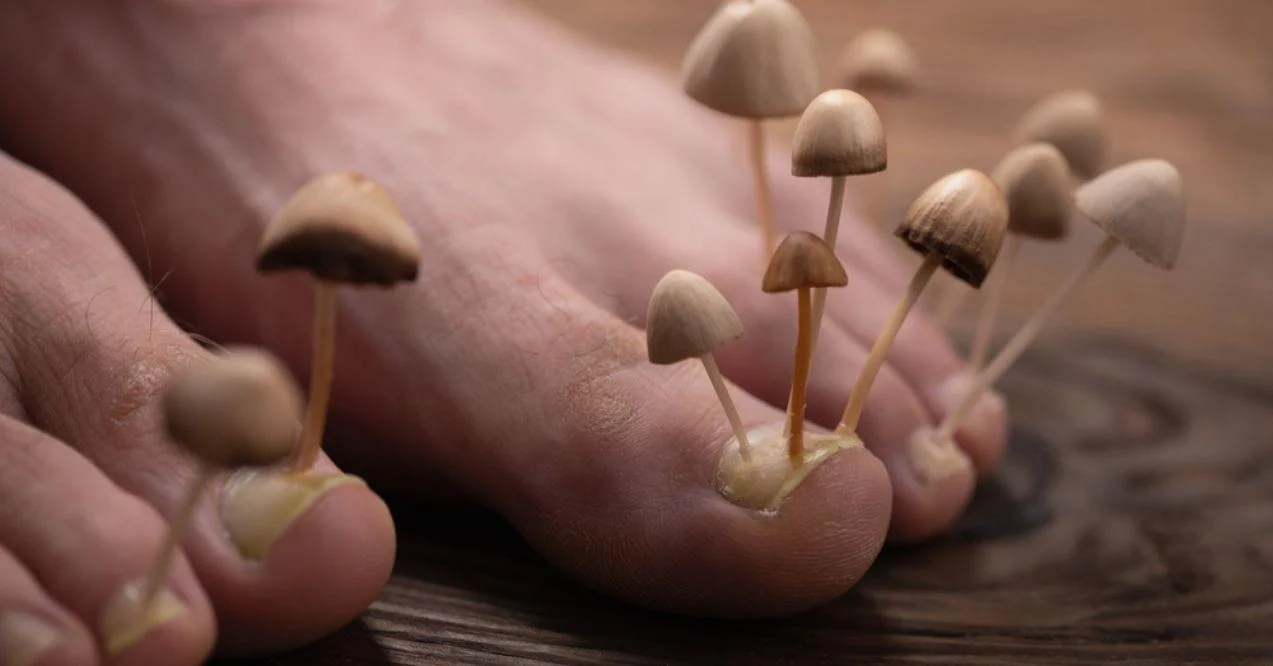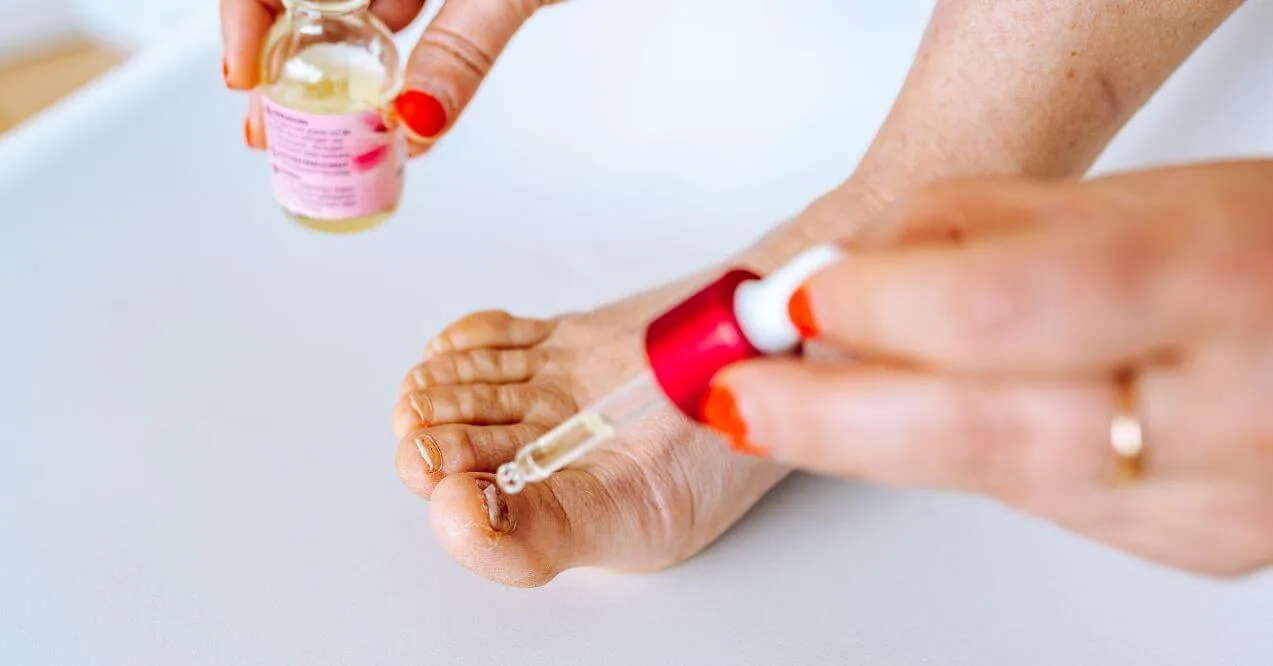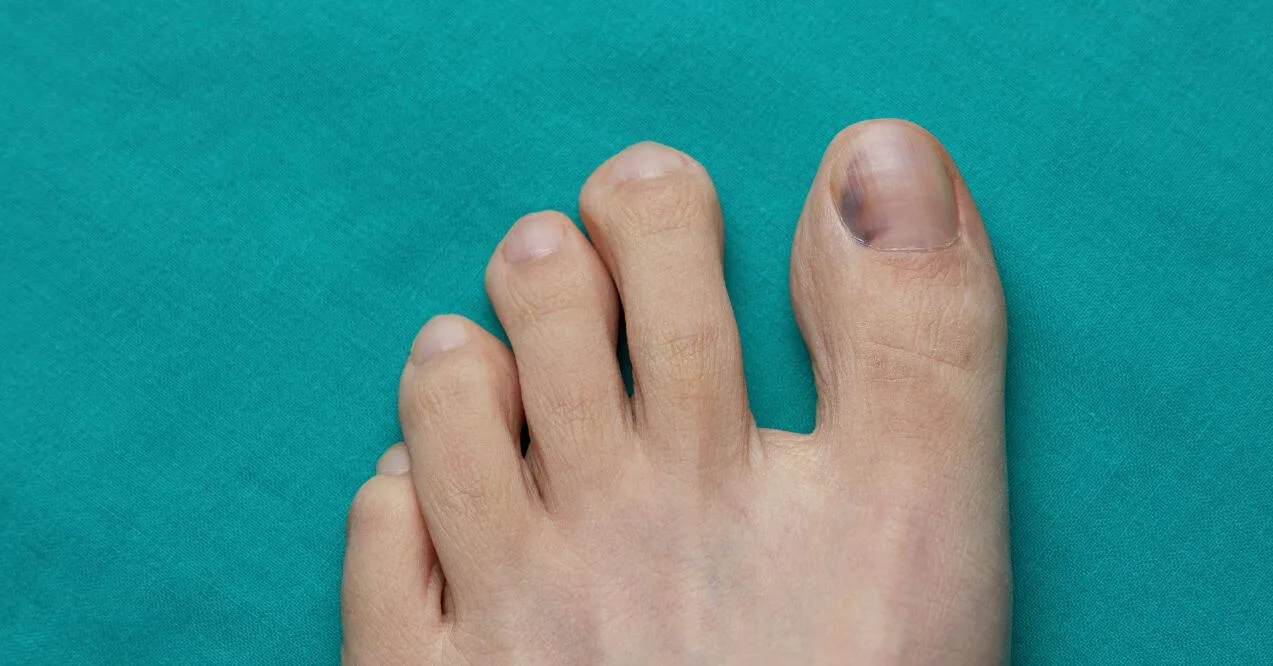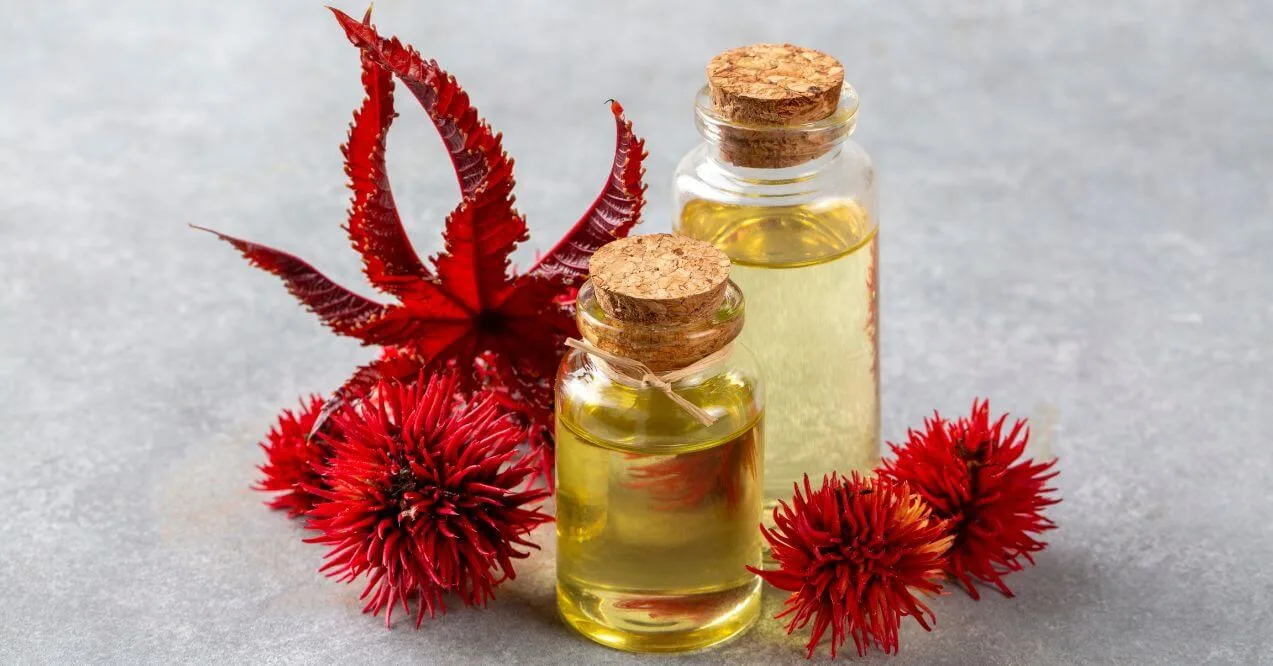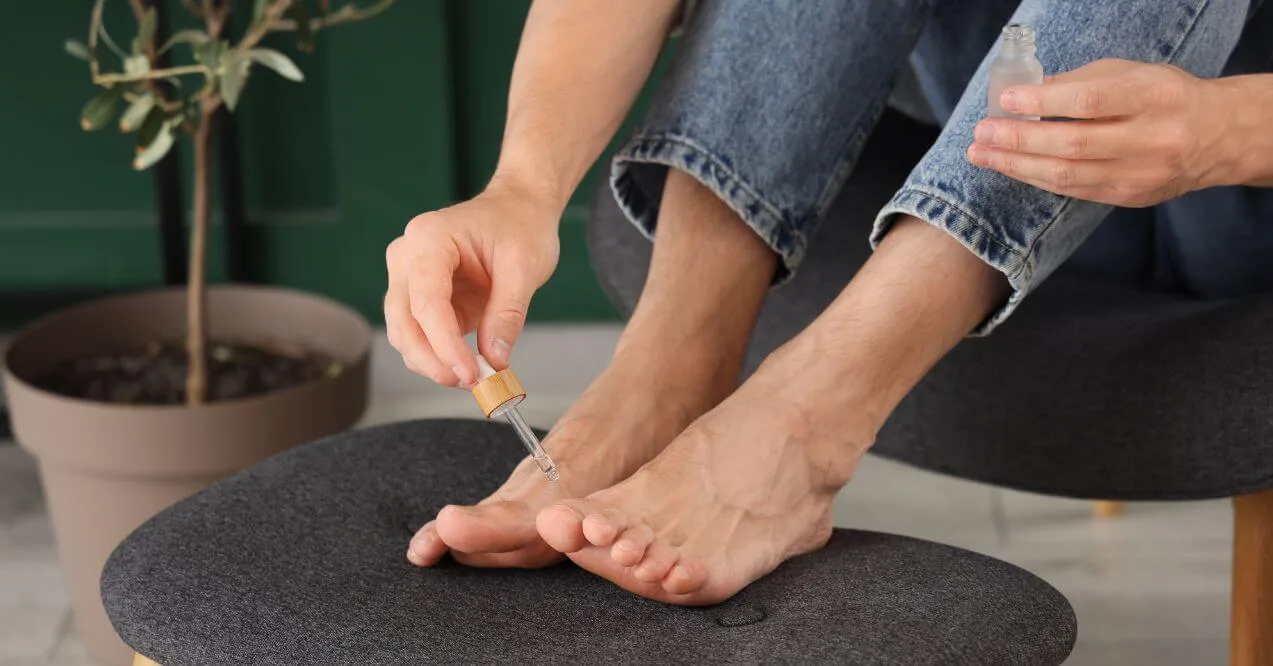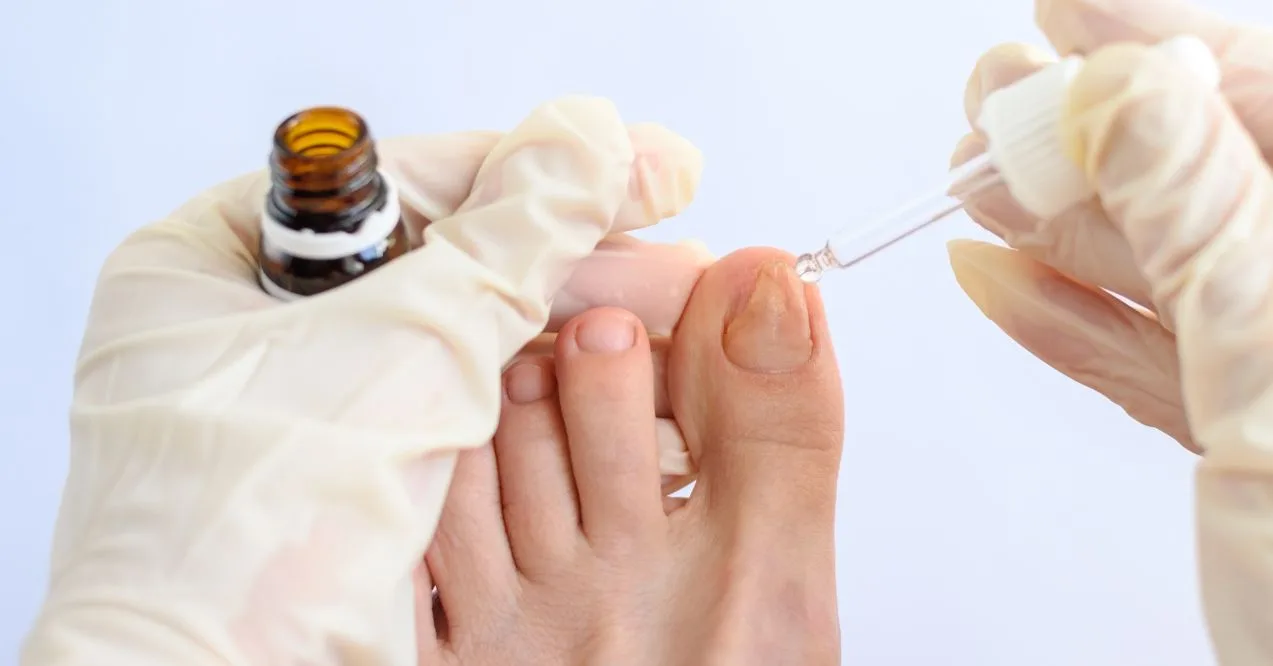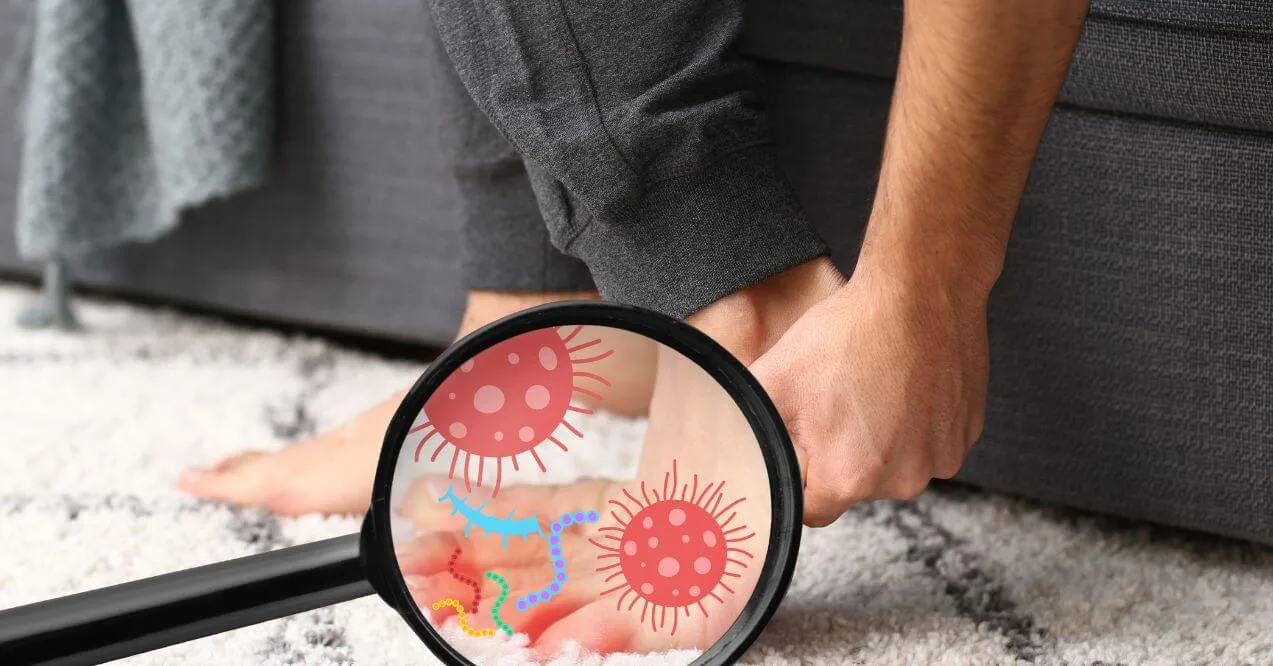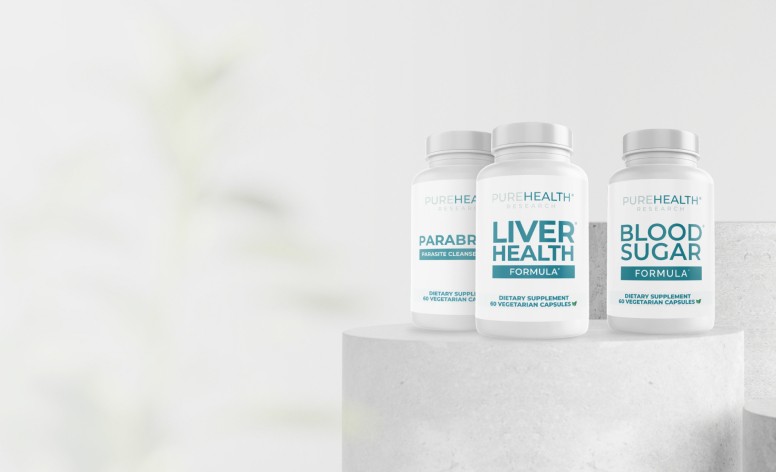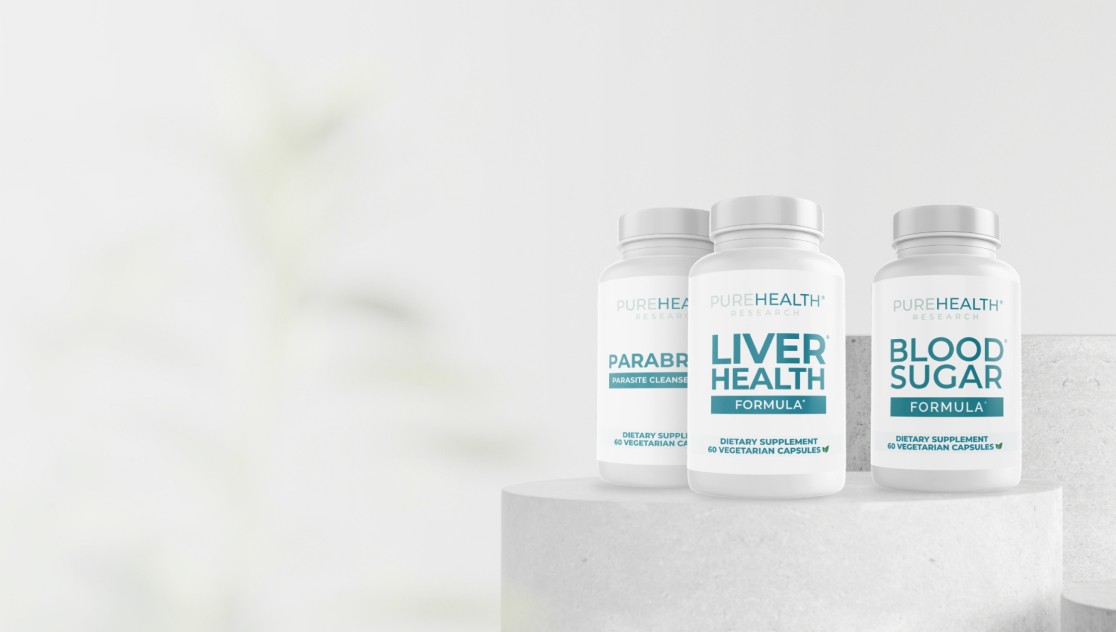Bleach for Toenail Fungus. Should I Use It?
Medically reviewed by our experts
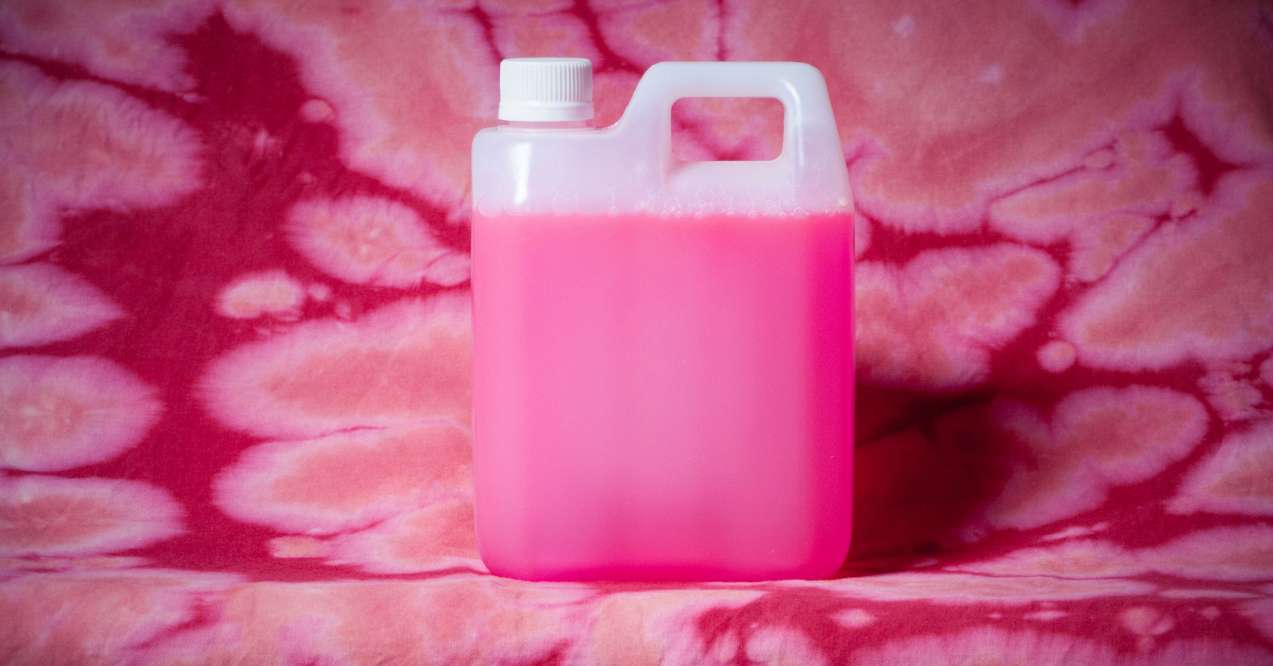

Have you ever considered using bleach for toenail fungus? If so, hold on. There may be a few things you need to know first. You may be experiencing breaking toenail edges or thickening without knowing the root cause. Research shows that this kind of microorganism infestation is a major cause of toenail thickening, discoloration, and edge-breaking.
Different medications and home remedies have been tried to ease the condition, but the results aren’t always the best. One strategy people often recommend online is the use of bleach to kill the fungus. Toenail fungus comes in different types, and each requires different medication. This article provides a solution to the problem with a complete guide and answers the question of whether bleach is useful for this or not.
Understanding Toenail Fungus
Toenail fungus is a fungal microorganism infestation that affects the toenail. This is known as onychomycosis. Fungi can enter here and attack the tissue just beneath it through a cut or crack in the toe. As a result, the toenails may become thick and yellow, with visible streaks. The affected nail may start to discolor, thicken, and even break on the edges.
Fungus does not affect everyone in the same way; it is more common in certain people than others. Research suggests that it is mostly found in older adults with conditions like trauma, problematic circulating sugar metabolism, foot deformity, and nail injuries.
Toenail Fungus Types

Three types of fungi-related infestation for the toenails exist. Let’s take a look at each one of them:
Subungual
Dermatophytes, particularly Trichophyton rubrum is the most common type of toenail fungus, affecting the underside of the nail plate and nail bed. The most common signs of subungual onychomycosis can be discoloration, crumbling, or lifting of the nail. Here, the microorganisms often start at the base. That area will then thicken and grow discolored, especially if you have a compromised immune system.
White Superficial
This toenail fungus is caused by different fungi that attack the top layer of the toenail. You have a white superficial nail fungus infestation if you see nail pitting, white defined flaky patches, or soft, rough, or crumbly patches. This infection is commonly caused by Trichophyton mentagrophytes.
Candida
Candida is another common toenail fungus. People with regular wet feet, infested, or injured nails, and those with chronic problems caused by impaired immune systems are prone to it. Other groups of people at risk of these fungi include those who work with soaps and detergents and those who take immunosuppressant medications.
Toenail Fungus Stages
As the toenail fungus progresses, it moves through various phases. Each one has specific symptoms, duration, and impact on nail appearance. To understand the various stages of toenail fungus, it is important to be familiar with each one, as it represents the journey to full recovery. Here are the three stages explained.
Early Stages
Here, you may not notice any changes in your toenails. However, if you take a closer look, you will see changes in your nail color. It can be yellow or white. It can also become brittle or slightly thicker. Tenderness or discomfort won’t start at this stage. However, if you put on tight shoes, you may experience itchiness and some increased pressure, which may cause slight discomfort.
Moderate Stages
In this phase, the symptoms become more prominent. Additionally, the level of discomfort you experience increases. Wondering, “why do my toenails smell?” In short, the discoloration of your toenail becomes more noticeable, and over time, it may start to emit an unpleasant smell. If the fungus is superficial, the nail may have a white powdery surface. When the nail bed is damaged, the discomfort increases to the point that even walking becomes difficult.
Later Stages
This is the last stage of toenail fungus. Here, the nails are severely deformed, with the surfaces becoming rough or the edges crumbling. At this phase, trimming the nails becomes really difficult due to their thickness and hardness. Also, you will experience severe discomfort at this stage because the nail bed is now visibly damaged. This means wearing shoes will be challenging because of the severe discomfort in the surrounding skin tissues.
Toenail Fungus Causes
As indicated earlier, this infestation originates from various types of fungi, the most common one being dermatophytes. Others include yeast, molds, and bacteria. Once it happens, discoloration of the nail ensues, which can be yellow, green, or black. Common causes and contributors of toenail fungus include:
- Tight shoes or hosiery that cause sweating, resulting in a moist, dark environment
- A weak immune system that is susceptible to pathogenic invasion
- Damaged toenails
- Lack of proper foot hygiene
- Severe health conditions that affect your immunity
- Walking around barefoot, especially in warm, wet places where fungus easily spreads, like in gyms, saunas, pools, or communal showers
Toenail Fungus Appearance
Wondering what does toenail fungus look like? The most common symptom in terms of appearance is a change in nail color. When the fungi attack the nail bed, the composition of the nail changes, which may cause color shifts.
As the dermatophyte fungi grow, they use keratin, a structural protein that gives your nails stiffness. As they break down the keratin, the nail lacks the building blocks it needs to grow, thus changing its appearance and texture.
Bleach for Toenail Fungus: Why We Don’t Recommend Using It
Besides the discoloration of the healthy toenail, the fungus damages the skin beneath and surrounding the toenail, causing mild tenderness to severe discomfort if untreated. Though various therapy options exist, it doesn’t mean bleach should be used. Bleach, also known as sodium hypochlorite, can worsen toenail fungus. It increases the chances of being affected by a toenail infestation.
Using bleach increases the risk of fungal infestations, as it damages both the skin and nails. With such increased risks, the chances of fungus penetrating the damaged skin or cells become easy, and could worsen existing conditions. Besides, when you use undiluted bleach on your skin, the chemicals may cause burns, which may require medical attention. Worse still, breathing in concentrated bleach fumes can cause lung damage.
But, can toenail fungus spread internally? Yes, it can. Dermatophytes can enter the bloodstream and travel through the body to distant major organs, including the lymph nodes, the liver, brain, and bones and cause health problems, especially if left untreated. As previously mentioned, you can overcome it with proper hygiene, individual self-care, and patience. Remember that fungus utilizes the keratin in nails, permanently damaging them, so new nails must grow out and completely replace the damaged ones after the fungal microorganisms have been disabled.
You should also be aware that fungus can be transmitted from toe to toe or to your hand nails as well as from person to person. The most common method of transmission is by sharing personal hygiene items such as toenail clippers or showers – so placing a small towel on the shower floor and laundering it afterward helps prevent spreading it to family members. So, consider being cautious about these possibilities.
Bleach Baths for Toenail Fungus
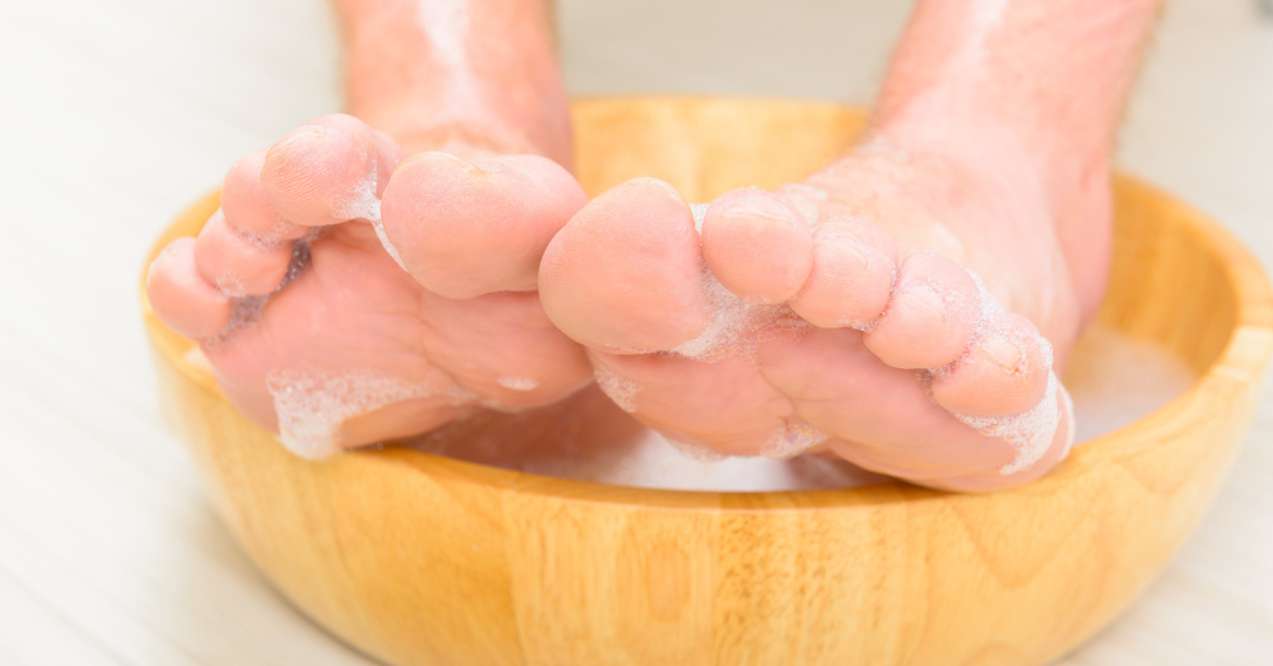
You may have also heard about bleach baths. Most dermatologists recommend its use, especially for treating recurrent Staphylococcus bacteria and dermatitis. The process involves mixing some bleach in bath water. Though bleach temporarily kills fungi, bacteria, and fungi, its effects are not long-lasting. This is because the fungus root deep beneath your nails and in your nail bed where the beach can’t reach and just grows back. So, to avoid skin irritation, it’s recommended to use a bleach bath only if your dermatologists recommend it.
Safe Alternatives to Bleach
Now that you know using bleach for toenail fungus is not recommended, some scientifically proven methods, such as laser therapy and antifungal medications, prove to be a safer approach. We’ll discuss these in detail below.
Antifungal Therapies
They work by either preventing fungus from growing or by killing its cells. These drugs target structures such as fungal cell walls and membranes, which are different from human cells. This allows antifungal treatments to fight infestations without harming body cells. Their efficacy relies on the extent of the infestation, the medication applied, and the type of fungus. Here are the mechanisms of how they work:
- Mutating genes
- Disrupting enzymes
- Break down cellular membranes
Laser Therapy
The laser therapy method works by heating nail layers affected by the fungus using a laser which attempts to destroy the genetic composition responsible for the growth and survival of the fungus. According to studies done in 2018, the success rate of laser procedures on toenail fungus is very high, with an 83.7% improvement after six months. Though laser therapy is approved by the U.S. Food and Drug Administration (FDA) for a temporary increase of clear nails, laser therapy cure rates are lower than those of oral antifungal solutions.
The laser therapy method works by heating nail layers affected by the fungus using a laser, which attempts to destroy the genetic composition responsible for its growth and survival. The pros and cons of laser treatment for toenail fungus include its precision in targeting the infection without damaging surrounding tissue.
According to studies done in 2018, the success rate of laser procedures on toenail fungus is very high, with an 83.7% improvement after six months. However, multiple sessions may be required, and it can be costly. Though laser therapy is approved by the U.S. Food and Drug Administration (FDA) for a temporary increase in clear nails, cure rates are lower than those of oral antifungal solutions.
Surgical Options for Severe Cases
If the toenail is causing you a lot of discomfort, your dermatologist may consider permanent removal. Surgery for toenail fungus entails nail removal under local anesthetic. After that, a chemical is applied to prevent the nail from growing.
Home Remedies
Home remedies are temporary measures that you can use to help prevent further spread of the fungus. Though the fungus may seem to go away at first, the chances of it returning are still high. One such remedy involves soaking the nails in rubbing alcohol, which has antifungal properties. However, it is crucial to dilute the alcohol properly and consult a healthcare professional before attempting this method, as it can be drying and irritating to the skin.
For mild fungus cases, it’s possible the doctor may not recommend any therapies and instead advise you to use some home remedies such as:
- Covering your feet in public areas
- Wearing shoes that allow your feet to breathe
- Using foot powders and sprays
Preventing Toenail Fungus
Though there is no guarantee that you will completely avoid toenail fungus, there are things you can do to prevent it. Here are a few tips to use:
- Avoid walking barefoot in communal areas such as swimming pools, locker rooms, gyms, etc
- Clean your nail trimmer before use
- Always trim your toenails
- Wear shoes that are not too tight or loose to allow proper air circulation
- Wear clean socks or stockings each day
- Always follow doctors’ recommendations, especially if you have low immunity
Better yet, there are innovative supplements for toenail fungus designed to alleviate toenail fungus from within and support immunity. These supplements have proven effective for toenail fungus infestations and reducing discomfort.
The Benefits of Toenail Fungus Supplements
Supplements for toenail fungus are designed to support healthier nails from within. They contain natural antifungal ingredients and antioxidants that work by disrupting the fungus life cycle, promoting healthy nail growth, and supporting the body’s natural detoxification processes. Unlike harsh chemical treatments, these supplements offer a gentle, daily-use alternative.
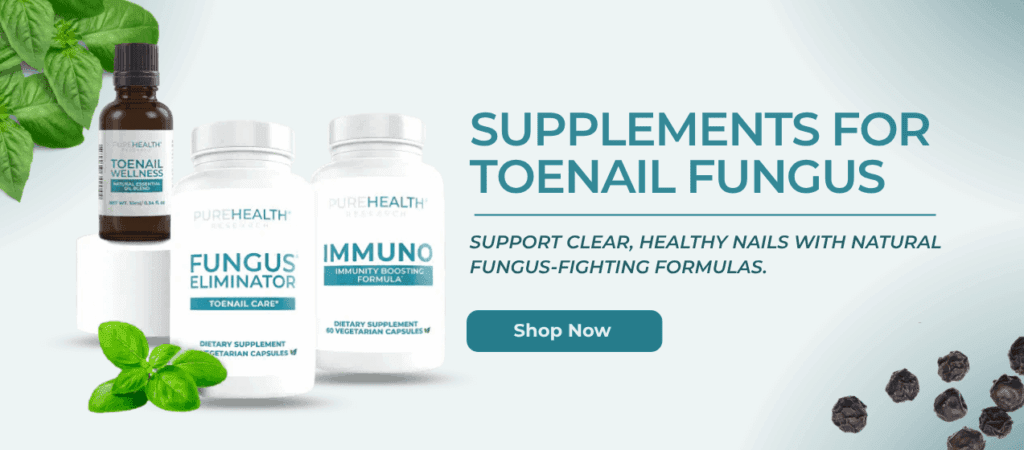
These supplements offer a healthier alternative to aggressive methods like bleach or messy topicals that often fail to reach fungus hidden deep within the nail structure. They also avoid the temporary results associated with many conventional antifungal therapies.
Key Takeaways
Toenail fungus is a common condition that can affect both the appearance of your toes and your comfort while walking. As it progresses, you may notice nail discoloration, thickening, a foul odor, and potential health issues. If home remedies fail, or if you experience severe discomfort, it’s important to consult a medical provider. Avoid using bleach directly on toenail fungus unless specifically advised by your dermatologist, as undiluted bleach can cause skin burns and may worsen the infection. In some cases, a dermatologist may recommend professionally-prepared bleach baths, but these should only be used under expert supervision. While bleach and topical antifungals may help on the surface, they often cannot reach under the nail plate, nail bed, or bloodstream where fungus may spread. Maintaining good hygiene is key to preventing the spread of the infection.
If you have a mild infestation, vinegar can help prevent fungus from growing on the surface but not from rooting deeper. On the other hand, it is not advisable to use bleach as it causes skin irritation and burns. You can’t use it unless a doctor recommends it for your case.
There isn’t an estimated duration of how long bleach takes to kill the toenail fungus, but it is very clear that bleach kills bacteria. Why do we advise against the use of bleach for toenail fungus? Bleach is acidic and can irritate or burn the skin when it comes into contact with it.
No. Bleach is not the best method to prevent or treat toenail fungus. In most cases, this infestation needs antifungal, surgical, or laser procedures.
Popular Articles
Advertisement. This site offers health, wellness, fitness and nutritional information and is designed for educational purposes only. You should not rely on this information as a substitute for, nor does it replace, professional medical advice, diagnosis, or treatment. If you have any concerns or questions about your health, you should always consult with a physician or other health-care professional. Do not disregard, avoid or delay obtaining medical or health related advice from your health-care professional because of something you may have read on this site. The use of any information provided on this site is solely at your own risk.




